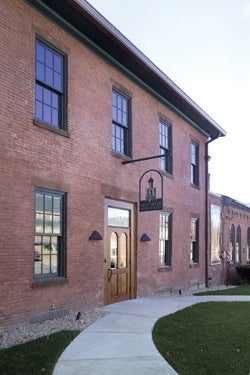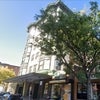Nypro Exec's Pet Project Seeks A Global Stage | Museum takes on ambitious marketing campaign to compete
Central Massachusetts readers of the New York Times may have done a double-take when they saw the full-page color advertisement on the back page of the Sept. 7 Fall Arts Preview.
The ad, which cost nearly $100,000 to place, touts an upcoming exhibit of six centuries of art, based on a partnership with one of Russia’s most important museums, and located at a museum in … Clinton, Massachusetts.
The two-year-old Museum of Russian Icons has already been embraced by many in Clinton and the surrounding towns as a welcome attraction, but the New York Times ad and the exhibition it promotes demonstrate that its ambitions go well beyond that.
The museum is spending $1 million on the exhibition — done in partnership with a Russian gallery — plus another $1.5 million to nearly double the museum’s size in anticipation of the Oct. 16 opening, according to CEO and curator Kent dur Russell.
Modest Beginnings
This wasn’t always the plan. Founder Gordon Lankton, chairman of Clinton-based plastics company Nypro, said he started collecting the icons on a whim and assembled his 340-piece collection purely out of a growing personal interest.
Creating the freestanding museum in a refurbished historic mill in the center of Clinton was a major undertaking involving the total gutting of the building and the installation of solar panels, LED lighting and automated displays, but Lankton said even while he was sinking money into the project he didn’t have any clear expectations for the outcome.
Lankton said the museum’s growth mirrored that of Nypro itself. When he joined the company in 1962, he said, it had just 20 employees and annual sales of less than $1 million. It now has 15,000 employees in 16 countries and more than $1 billion in sales.
“None of this was planned to happen,” he said. “Just hard work made it happen. That’s basically the attitude I’m taking with this museum.”
Clearly, another reason for the museum’s success so far is Lankton’s financial commitment.
Admission fees, publications and a gift shop put a little money in its coffers, and Lankton said the institution is building a group of financial supporters for the future. But he said he’s personally endowed the museum to last for a century.
In the icon museum’s first year, 5,000 visitors showed up, according to dur Russell, and a similar number visited in just the first six months of the second year.
The current push to make a success of its special exhibit, done in collaboration with Moscow’s State Tretyakov Gallery, is a way to exponentially boost awareness of the museum on the national, and even international, stage, he said.
First In Class
Working with the Tretyakov is an exceptional opportunity for the young museum. This is the first collaboration the highly respected Russian gallery has done with a U.S. institution.
Lankton said it was made possible by the connections he has built up over years traveling in the Russian art world.
dur Russell said the museum is temporarily shelling out the kind of money on advertising that only institutions like the Metropolitan Museum of Art can afford to pay on a regular basis.
The museum hired Atomic Design of Boylston to do publicity within the state and also brought on Boston’s Carpman Communications for a national campaign. Rob Zeleniak, a principal of Atomic, said that besides the New York Times ad, the firm is putting ads in the Boston Globe and has a media buy with the Worcester Telegram & Gazette for the entire length of the exhibit.
Carpman is also doing publicity in population centers like New York, Los Angeles, Chicago, Philadelphia and Washington.
Part of the museum’s local interest has to do with its likely impact on the town’s economy.
Area restaurant owners said they’ve already noticed a modest boost. And the museum is promoting that connection even more by including a voucher to visit a local restaurant in the package deal for visitors who take a special bus from Boston to the museum during the exhibition.
Brian McNally, of the Irish-themed Old Timer Restaurant in town, said he’s thrilled that the museum is making an effort to share its success with other local businesses.
“As you can imagine, in this economy you’re grateful for anybody that walks in,” he said.










0 Comments